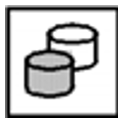Some of the most important components of the library SIPANY.SESAM-SQL.<ver>.MAN-DB consist of statement files and ESQL-COBOL programs. In these, the examples from the manuals are combined in a topic-specific way to produce executable demonstrations.
If an example is accompanied by the symbol on the left, this means that it is present |
The instruction files and ESQL-COBOL programs cover the following topics:
Topic | Runtime environment |
Reconstructing the ORDERCUST database | Instruction file |
Loading user data in the ORDERCUST database | Instruction file |
Unloading user data in different data formats | Instruction file |
Focus on DDL statements | Instruction file |
Focus on DML statements | Instruction file |
Focus on utility statements | Instruction file |
Focus on innovations in SESAM/SQL-Server V3.2, V4.0, V5.0, | Instruction files |
Focus on partitioned tables | Instruction file |
Focus on Unicode tables | Instruction file |
Focus on procedures and User Defined Functions (UDFs) | Instruction files |
Selecting records from a table | ESQL-COBOL program |
Inserting records in a table | ESQL-COBOL program |
Changing records of a table | ESQL-COBOL program |
Deleting records from a table | ESQL-COBOL program |
Using dynamic SQL | ESQL-COBOL program |
Working with BLOB objects | ESQL-COBOL program |
Use of procedures and User Defined Functions (UDFs) | ESQL-COBOL program |
Do the following to start the instruction files and ESQL programs:
Instruction files:
In the Utility Monitor, open the IFP - INSTRUCTION FILE PROCESSING screen and enter the name of the instruction file.ESQL-COBOL program files
Use the supplied procedure to start the ESQL-COBOL programs. Alongside the executable programs, the library SIPANY.SESAM-SQL.<ver>.MAN-DB also contains the source programs and the procedures required to compile and link a source program.
The Readme file in the library SIPANY.SESAM-SQL.<ver>.MAN-DB contains more detailed descriptions of all the necessary steps.
You can develop new instruction files and ESQL-COBOL programs in the EDT editor and save these as library members in the same way as the existing files.

